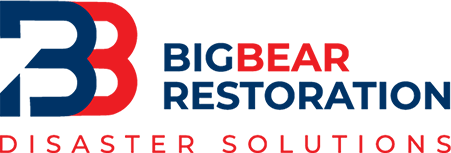In the hot and humid climate of Atlanta, Marietta, and Buckhead, our air conditioning systems are essential for keeping our homes comfortable. However, what many homeowners may not realize is that these same AC systems can also become breeding grounds for mold. Mold in AC ducts poses a serious health risk and can compromise the air quality in your home. In this comprehensive guide, we'll explore the signs of mold in AC ducts, how to check for it, and crucial steps to prevent its growth.
Understanding the Risk: Mold in AC Ducts
Mold thrives in moist and dark environments, making AC ducts the perfect breeding ground. As air circulates through the ductwork, it carries moisture and organic particles, providing an ideal habitat for mold spores to settle and multiply. Signs of mold in AC ducts include:
- Musty odors emanating from vents: If you notice a musty or moldy odor when you turn on the air conditioning, it could indicate the presence of mold in the ducts.
- Visible mold growth: Visually inspect the air vents and areas around the air ducts for any visible mold growth. Mold may appear as dark spots or patches of green, gray, or black.
- Allergic Reactions: If you experience symptoms such as sneezing, itchy eyes, nasal congestion, or respiratory issues when the air conditioning is running, it could be a sign of mold in the ducts releasing spores into the air.
- Moisture Accumulation: Air ducts can accumulate moisture, especially if there are leaks in the system or drainage problems. If you observe excessive moisture around the ducts or near the air vents, it could be an indicator of mold.
How to Check for Mold in AC Ducts
Checking for mold in AC ducts requires a systematic approach. Here's what you can do:
- Visual Inspection: Carefully inspect the areas around your air vents for any signs of mold growth or discoloration. Pay close attention to corners and crevices where moisture may accumulate.
- Check Air Filters: Remove and inspect your air filters for any signs of mold or mildew growth. Dirty or clogged filters can also contribute to mold proliferation by restricting airflow and trapping moisture.
- Use a Flashlight: Shine a flashlight into the duct openings to look for any visible signs of mold growth deep within the ductwork.
- Professional Inspection: If you suspect mold but are unable to detect it yourself, consider hiring a professional mold inspector. They have the expertise and tools necessary to conduct a thorough inspection and identify any hidden mold growth.
Related article: Mold Testing In Atlanta & Marietta: What to Know
What to Do If You Have Mold in Air Ducts
- Do Not Attempt DIY Cleaning: Mold can be hazardous to health, especially if inhaled or if it comes into contact with the skin. It is important not to attempt to clean it yourself, as this could spread mold spores and worsen the problem.
- Contact Professionals: * Instead of trying to address the problem yourself, it is advisable to contact a professional mold remediation company. These companies have the necessary equipment and expertise to remove mold safely and effectively from air ducts.
- Schedule an Inspection: Once you have contacted professionals, schedule a comprehensive inspection of your air ducts to assess the extent of the problem and determine the best course of action for remediation.
Related article: Mold inspections in Atlanta
Preventing Mold Growth in AC Ducts
Prevention is key when it comes to mold in AC ducts. Here are some proactive measures you can take:
- Maintain Optimal Temperature: Keep your AC temperature set between 72-78°F to prevent excessive humidity levels that can promote mold growth.
- Regular Maintenance: Schedule regular maintenance for your HVAC system, including cleaning and inspecting ductwork, replacing air filters, and ensuring proper drainage of condensate lines.
- Ensure Proper Ventilation: Improve air circulation by opening windows and doors when the weather permits and using exhaust fans in kitchens and bathrooms to reduce moisture levels.
- Address Water Leaks Promptly: Repair any leaks or water damage in your home promptly to prevent moisture from entering the ductwork and promoting mold growth.
- Control Humidity: Use dehumidifiers in areas of your home with high humidity levels to reduce moisture in the air and prevent mold formation in air ducts.
If you need information about Mold inspections in Atlanta
Mold in AC ducts poses a serious health risk and can compromise the air quality in your home. By understanding the signs of mold growth, checking your AC ducts regularly, and taking proactive measures to prevent mold proliferation, you can ensure a healthier and safer indoor environment for you and your family. If you suspect mold in your AC ducts or need professional assistance with mold remediation, contact Big Bear Restoration today. We specialize in mold inspection and remediation services in Atlanta, Marietta, Buckhead, and surrounding areas. Don't let mold compromise your indoor air quality—take action today!


